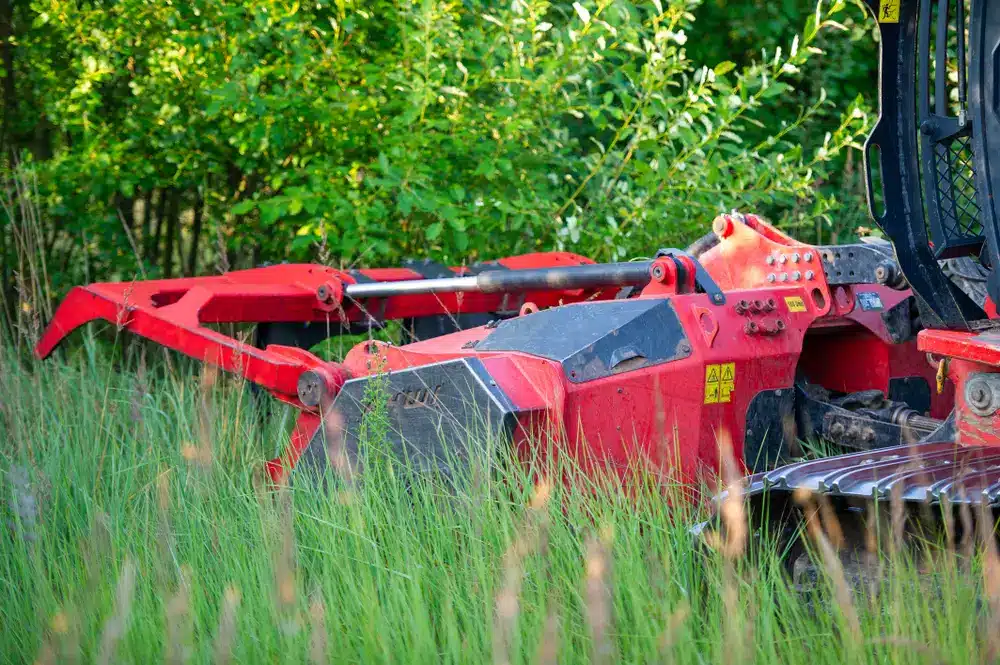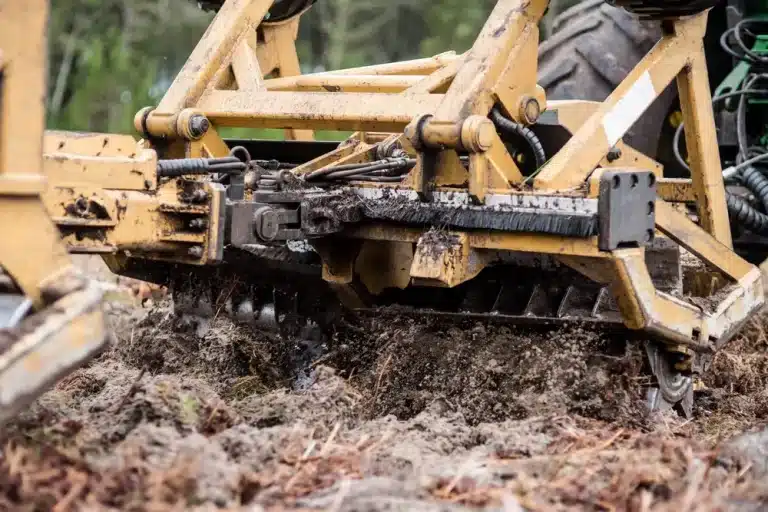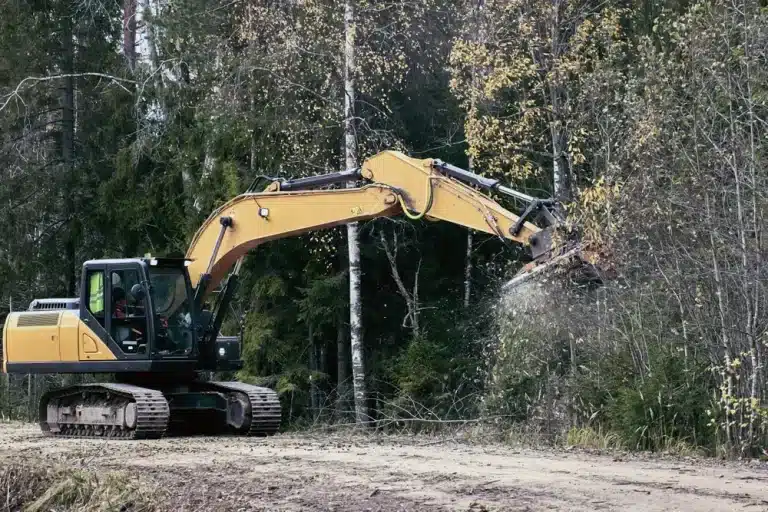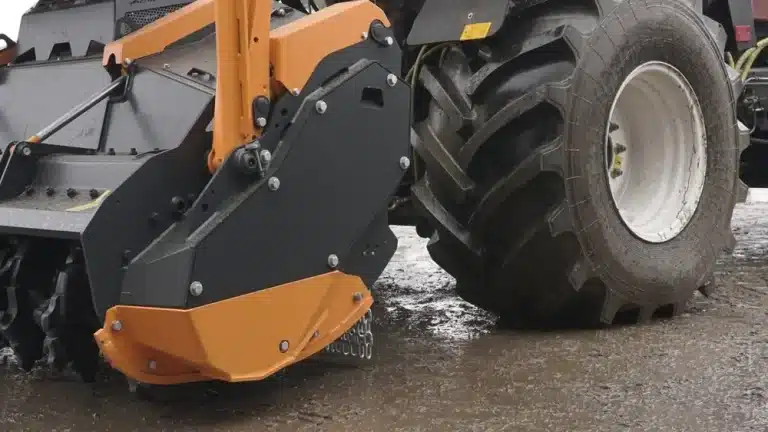In southwest France, particularly near Toulouse, the demand for efficient land-clearing equipment has grown rapidly. Choosing the right forestry mulcher goes beyond horsepower—it requires matching your machine to your land, vegetation, and work style. Here’s how to avoid costly mistakes and find the best mulcher for your needs.
Understanding the different types of mulchers
Each mulcher type fits specific use cases:
| Type | Best Use | Example Application |
| Drum shredder | Large trees, stumps | Storm cleanup, land prep |
| Disc shredder | Mid-size limbs, mixed brush | Park maintenance, road edges |
| Flail shredder | Light vegetation, saplings | Orchard rows, undergrowth |
| PTO-driven | Versatile, tractor-compatible | Farm, ranch work |
| Self-propelled | Remote, uneven terrain | Trail clearing, wetlands |
Match your machine to the job. Overpowering or underpowering leads to wear, inefficiency, or damage.
What to look for when choosing a mulcher
Key factors to consider include:
- Processing capacity – Can it handle the diameter and wood density you face regularly?
- Power source – Choose electric for light jobs; petrol or PTO for larger or remote areas.
- Noise level – Models exceed 90 dB. Use ear protection and check local noise laws.
- Size and weight – Consider storage space and transport logistics.
- Ease of maintenance – Look for tool-free access and clear service intervals.
- Built-in safety – Essential: kickback guards, emergency stops, and clear warnings.
- Foreign object tolerance – Important in rocky or unpredictable terrain.
A machine that’s too large will waste fuel and wear faster; too small and it’ll slow or break.
Understanding technical specifications
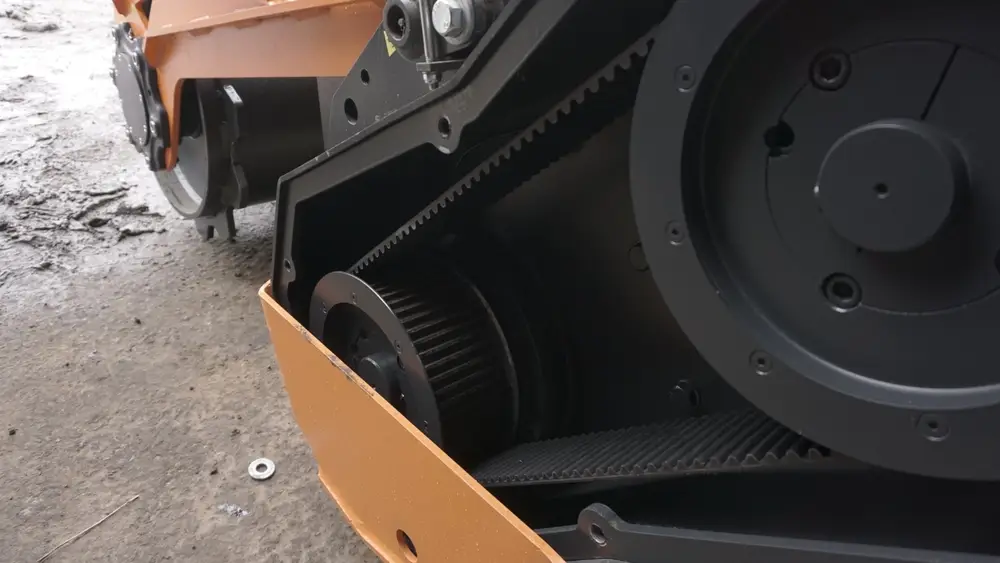
Don’t skip the spec sheet—here’s what matters most:
- Engine or PTO compatibility – Ensure your carrier has enough power for the unit.
- Cutting system – Fixed teeth for big wood; swinging hammers for lighter brush; flails for grass and vines.
- Input/output diameter – Know what size material it can process and what chip size it produces.
- Customization – Features like adjustable screens and rotors let you control mulch size.
Proper matching here helps avoid clogs, overwork, or poor cutting quality.
Practical considerations before you buy
A powerful machine isn’t enough—it must also fit your team and workflow:
- Ergonomics – Prioritize intuitive controls, lumbar-support seats, and visible displays.
- Storage and transport – Check weight and dimensions against your storage space and trailers.
- Durability – Thick steel, reinforced welds, and rust-proof coatings extend service life.
- Documentation – Look for multilingual manuals with clear visuals and safety instructions.
The easier the machine is to operate and maintain, the faster your jobs get done.
Common buyer mistakes and how to avoid them
Many landowners face these challenges:
- Choosing the wrong type – A drum mulcher on fine brush is overkill; a flail on stumps will break.
- Underestimating power needs – Always check HP ratings and PTO requirements.
- Ignoring clogging risk – Pick a unit with self-cleaning or anti-jam features if handling leafy or wet debris.
- Skipping maintenance planning – No plan = blade damage, oil leaks, downtime.
- Noise and vibration – Look for models with vibration dampening and wear protective gear.
- Lack of debris management plan – Know how you’ll collect, transport, or spread the chips before you start.
- Unprepared for repairs – Stock spare parts (blades, belts, grease) to avoid site delays.
Avoid these traps to ensure a smoother ownership experience.
Best practices for operating and maintaining your mulcher
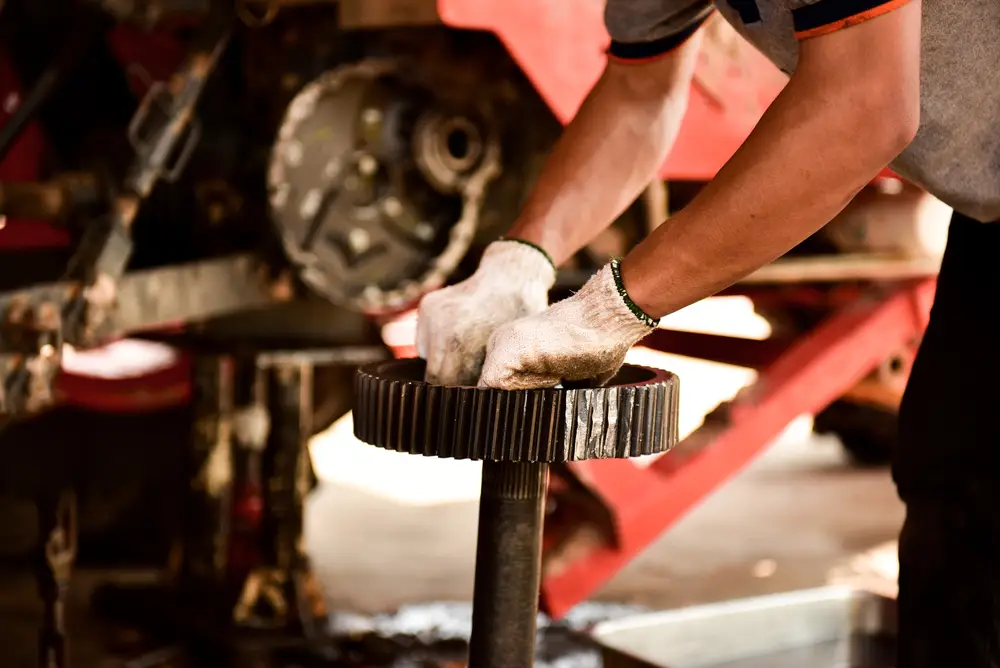
Follow these core guidelines:
- Read and follow the manufacturer’s manual
- Inspect before each use (blades, bolts, hoses, safety guards)
- Wear protective equipment (gloves, goggles, earplugs)
- Never overload with branches above rated size
- Turn off engine before servicing
- Store indoors on level, dry ground
- Use approved replacement parts only
- Keep a maintenance log
Treating the mulcher right keeps it safer, longer-lasting, and more efficient.
How to track the success of your investment
Evaluate performance using a mix of hard metrics and field observations:
| Metric | Shredder A | Shredder B | Shredder C |
| Volume (m³/hour) | 8 | 10 | 6 |
| Fuel use (L/hour) | 12 | 14 | 9 |
| Annual repair cost | $200 | $250 | $150 |
| Blade life (hours) | 400 | 350 | 500 |
Also assess:
- Mulch quality – Uniform chips = better for compost or erosion control
- Operator feedback – Was it easy to use? Was safety clear?
- Crew productivity – Compare cleared volume per shift or day
- Repair downtime – How often is the machine out of service?
Combine performance data with user input to identify whether your mulcher is meeting expectations—and where improvements can be made.
